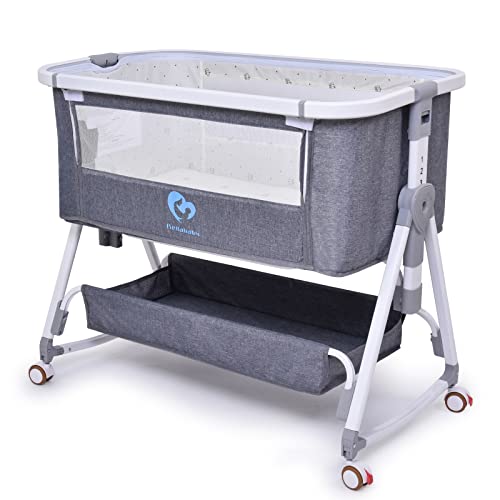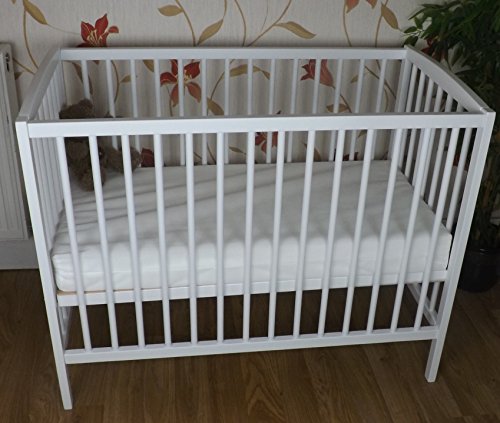The 10 Most Terrifying Things About Cot Sales
페이지 정보

본문
 Cot Sales and Ambulance Services
Cot Sales and Ambulance ServicesCot sales are increasing due to the higher rates of birth and increased awareness about safety for babies. Many companies are also introducing new models of cots that can be turned into day beds.
A consistent and reliable method for assigning COT designations is critical to ensure the accuracy of government pricing computations. A well-documented SOP and an effective auditing process are important.
Demand for ambulances is increasing
The market for ambulance services in the world is booming because of the increasing number of traumatic accidents and chronic health issues. These conditions are often accompanied by medical emergencies which require prompt and prompt intervention to save lives. This increased demand emphasizes the importance of having efficient emergency response systems as well as accessible healthcare facilities to ensure the health of the population.
Ambulances transport patients to hospitals and other healthcare facilities, and also provide out of hospital care while in transport. The demand for these vehicles is fueled by factors such as a rising number of road accidents, an increasing number of people who are elderly and favorable reimbursement policies. Air ambulances are also in high demand due to the necessity for fast and reliable medical transport across long distances.
Based on the service operator the market for ambulances is divided into hospital-based, independent and government. Hospital-based ambulance services are operated mostly by healthcare facilities and private companies. The independent segment, which comprises air ambulances that are privately owned and operated and is expected to expand quickly over the forecast time. The government-operated sector, on the contrary, includes ambulances operated by state, municipal, or military units.
Based on the type of fuel used the global ambulance services market is categorized into diesel, gasoline, and electric. The diesel segment is expected to bring in the highest revenue share during the forecast time. The reliability and performance of ambulances powered by diesel is favored by fleet managers. The fuel efficiency of diesel engines continues to increase with technological advances. However, growth in the diesel sector is hindered by stringent emission regulations.
The demand for ambulances is driven by the development of new medical technology. Telemedicine capabilities allow ambulances communicate with doctors and receive treatment guidelines in real-time. These tools help improve the outcomes of patients and reduce emergency department (ED) admissions.
The global market for ambulance services is dominating by North America, followed by Europe and Asia Pacific. The market in North America is driven by a high demand for quality healthcare services as well as a well-established system of healthcare and favorable reimbursement policies. Furthermore, strategic endeavors by market players and the growing the geriatric population of the region are also increasing the potential for growth of the market.
Increased expenditure in the healthcare sector
The healthcare sector is responsible for a large part of the national economic activity. In addition, it contributes to the development of human capital as well as improving labor productivity. It is important to increase spending in this sector for economic performance. However, it's not always straightforward to determine the impact of health care spending on a country's economy. There are multiple factors that influence economic growth and health care spending and these variables can differ across different industries and regions of the country.
In the US, private businesses households, as well as the government are the main source of funding for health care. Private household and business expenses are funded by health insurance premiums paid to private individuals and out-of pocket spending. Government program spending is also financed (either through dedicated taxes or general revenues). Program spending by the government is a significant driver of overall health spending trends. In the COVID-19 epidemic, government spending on long-term, non-hospital care services soared significantly. More than one third (33%) of all health expenses in the United States are accounted for by government programs.
Gross Domestic Product (GDP) is often used to determine health care expenditures. GDP is an indicator of a nation's total output. In the case of health care, this encapsulates the production of medical goods and services. A growing economy is correlated with a better GDP and more jobs. It's therefore important to understand how healthcare expenditures affect GDP and other indicators of economic growth.
It is crucial to think about the impact of healthcare spending on economic performance when developing public policies and evaluating any new healthcare initiatives. Numerous studies have proven that higher investment in healthcare can increase the productivity of human resources and stimulate economic performance (1,2). However, the effects aren't as clear and can vary depending on the type of sector and the population groups that are affected by the expenditure.
To ensure that the prices of government agencies are consistent and accurate it is crucial to have a documented method for assigning COTs. A lack of consistency could lead to inaccurate data which can result in negative Medicaid rebates as well as NFAMP and the 340B/PHS ceiling price. Incorrect COT designations may result in chargebacks, contract limitations, and other financial consequences. To avoid these issues it is recommended to develop an assignment method for COT that is based on the manufacturer's SOPs and COT reference libraries.
Demand for convertible cribs is on the rise
Parents are willing to spend more for their infants as baby products get more sophisticated. This has led to an increase in the demand for cribs that can be transformed into daybeds or toddler beds. These conversion kits can be used to extend the life of a crib and save money. They also prevent parents from having to rush at the last minute to find an appropriate bed for their child. The demand for cribs like these is expected to increase during the forecast time.
The market for cribs and cots for babies is growing rapidly, driven by the increasing birth rates and increasing standards of living worldwide. The market includes a range of essential baby items like strollers monitors, cribs, and cots. The demand for multi-functional, high-quality, and safe baby furniture is driven by the increasing number of nuclear families and working adults. Leading brands such as DaVinci Baby offer multifunctional cribs which can be transformed into a toddler bed or full-sized beds. This lets parents get the most value for their money.
Many cribs are made of durable wood and metal, making them a good option for babies and children who are young. They are easy to clean, making them a good option for families with busy schedules. They are also equipped with safety features such as built-in side guard rails that protect against falls and an extra secure mattress latch. Some even feature adjustable mattress heights that can be adjusted for different age groups.
Specialty stores and online distribution channels sell cribs and baby cots online cots. The designs are available in different styles, from traditional to contemporary. Some models even include features such as sensorSafe technology and airbags to increase safety and security. The use of environmentally friendly materials in the manufacturing process has also risen.
Since infants spend an average of two and a quarter years in their cots, they are a crucial part of their development. Manufacturers have responded by introducing new models that offer comfort, style, and functionality. Cradlewise, for example, has an intelligent crib that utilizes artificial intelligence to adapt to the baby's sleeping habits. It also features the bassinet mode for infants that can provide comfort as well as security.
The demand for multifunctional cots are growing
The market for baby cots worldwide is expected to expand rapidly, driven by shifting consumer preferences and technological advancements. Regional dynamics also affect the market. Asia, for example, is a major factor in market growth due to rapid urbanization, and a rise in disposable income. Parents in these countries are looking for products that are multi-functional to reduce space and offer convenience. Companies that can align their product offerings with these demands will be successful in the marketplace.
Manufacturers are adding smart technology to baby cots in order to increase functionality and user-friendliness. A new generation of smart cribs, for instance, comes with IoT capabilities which allows parents to monitor their children through their mobile devices. These advances make baby cots more attractive and flexible, which raises the demand for them.
The market for multifunctional cots is also being boosted by the growing trend of urban living. Families living in smaller apartment are looking for furniture that makes the most of space, and nursery cots that convert into playpens or even adult beds are popular with many buyers. Additionally the safety aspect is a major concern for many families which has resulted in an increase in demand for cots that comply with stringent regulatory standards.
Consumers are also seeking multifunctional cots that offer fashionable designs. Brands that emphasize design and quality are getting more popular with buyers, especially millennial parents. This age group is more technologically savvy and focused on research and has fueled the demand for furniture for babies that blends function with aesthetics.
Another factor influencing cot sales is the changing economic environment, as families prioritize essentials when budgets are tight. This has led some manufacturers to launch affordable options, allowing them to compete with low-cost competitors in the marketplace. The growth of e-commerce has also influenced the purchasing habits of consumers, allowing them to access more baby products at competitive prices.
In the long term, the demand for multifunctional baby cots on sale cribs will continue to expand. This growth is supported by new trends and an increasing importance placed on family values. The market's growth may be hindered by challenges like fluctuating raw material costs and intense competition. Therefore, it is essential that manufacturers continuously develop and adjust to the changing market.

- 이전글Whispered Poker Game Secrets 24.11.25
- 다음글Using High Stakes Poker 24.11.25
댓글목록
등록된 댓글이 없습니다.

